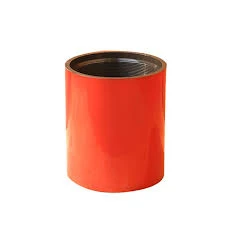- Afrikaans
- Albanian
- Amharic
- Arabic
- Armenian
- Azerbaijani
- Basque
- Belarusian
- Bengali
- Bosnian
- Bulgarian
- Catalan
- Cebuano
- Corsican
- Croatian
- Czech
- Danish
- Dutch
- English
- Esperanto
- Estonian
- Finnish
- French
- Frisian
- Galician
- Georgian
- German
- Greek
- Gujarati
- Haitian Creole
- hausa
- hawaiian
- Hebrew
- Hindi
- Miao
- Hungarian
- Icelandic
- igbo
- Indonesian
- irish
- Italian
- Japanese
- Javanese
- Kannada
- kazakh
- Khmer
- Rwandese
- Korean
- Kurdish
- Kyrgyz
- Lao
- Latin
- Latvian
- Lithuanian
- Luxembourgish
- Macedonian
- Malgashi
- Malay
- Malayalam
- Maltese
- Maori
- Marathi
- Mongolian
- Myanmar
- Nepali
- Norwegian
- Norwegian
- Occitan
- Pashto
- Persian
- Polish
- Portuguese
- Punjabi
- Romanian
- Russian
- Samoan
- Scottish Gaelic
- Serbian
- Sesotho
- Shona
- Sindhi
- Sinhala
- Slovak
- Slovenian
- Somali
- Spanish
- Sundanese
- Swahili
- Swedish
- Tagalog
- Tajik
- Tamil
- Tatar
- Telugu
- Thai
- Turkish
- Turkmen
- Ukrainian
- Urdu
- Uighur
- Uzbek
- Vietnamese
- Welsh
- Bantu
- Yiddish
- Yoruba
- Zulu
Understanding the Importance of Tubing Pup Joints in Oil and Gas Operations
Understanding Tubing Pup Joints in Oil and Gas Operations
In the complex world of oil and gas extraction, every component plays a vital role in ensuring efficient operations. One such critical component is the tubing pup joint. Understanding tubing pup joints involves dissecting their function, construction, and significance in the oil and gas industry.
What is a Tubing Pup Joint?
A tubing pup joint is a short section of pipe that connects two larger segments of tubing in a wellbore. Typically, these joints are manufactured in various lengths, commonly ranging from 2 to 10 feet. They are designed to maintain the integrity of the tubing string, allow for adjustments in depth, and facilitate pressure management within the well.
Purpose and Functionality
The primary function of tubing pup joints is to provide flexibility in well design. During the drilling process, it may be necessary to adjust the length of the tubing to accommodate changes in the wellbore or the installation of particular equipment. Additionally, these joints play a crucial role in pressure control. By using pup joints, operators can maintain the appropriate pressure throughout the well, which is crucial for safe and effective production.
Moreover, tubing pup joints allow for modifications in pipe configurations. For example, if a specific tubing size is required or if certain mechanical tools need to be inserted into the tubing, a pup joint can be employed to create the necessary space. This adaptability makes tubing pup joints essential in various drilling and production scenarios.
Construction of Tubing Pup Joints
Tubing pup joints are typically made from high-strength materials, such as carbon steel or alloy steel, to withstand the high pressures and corrosive environments characteristic of oil and gas operations. The manufacturing process involves precision machining to create threaded ends that can easily connect with existing tubing. Heat treatment may also be employed to enhance the mechanical properties of the metal, ensuring durability and resistance to wear.
tubing pup joint

These joints can be designed to various specifications depending on the operation's requirements. For instance, they might feature different wall thicknesses or corrosion-resistant coatings to suit particular environmental conditions.
Applications in the Field
Tubing pup joints find applications in various scenarios throughout the life of a well. During the drilling phase, they might be used to connect tools or manage materials sent down the wellbore. In production, they ensure that the flow of oil or gas is efficient by allowing fine-tuning of the tubing length and configuration.
Moreover, in workover operations where repairs or enhancements to existing wells are necessary, tubing pup joints facilitate the replacement of damaged tubing sections or the reconfiguration of the well structure without extensive overhauls.
Challenges and Considerations
While tubing pup joints are invaluable, they are not without their challenges. One potential issue is the risk of connection failure due to improper installation or wear over time. Consequently, regular inspections and maintenance are crucial to ensure the integrity of these joints. Additionally, the selection of pup joint specifications must consider the operating environment, including factors such as temperature, pressure, and potential chemical exposure.
Conclusion
In summary, tubing pup joints are essential components in the oil and gas industry, contributing to the adaptability, safety, and efficiency of well operations. Their ability to accommodate changes, manage pressure, and connect different sections of tubing makes them indispensable in both drilling and production phases. Understanding the role and significance of tubing pup joints is crucial for anyone involved in oil and gas operations, from engineers to field operators. As technology and methods continue to evolve, the importance of these seemingly simple components will undoubtedly remain significant in ensuring successful oil and gas extraction processes.
-
Tubing Pup Joints: Essential Components for Oil and Gas OperationsNewsJul.10,2025
-
Pup Joints: Essential Components for Reliable Drilling OperationsNewsJul.10,2025
-
Pipe Couplings: Connecting Your World EfficientlyNewsJul.10,2025
-
Mastering Oilfield Operations with Quality Tubing and CasingNewsJul.10,2025
-
High-Quality Casing Couplings for Every NeedNewsJul.10,2025
-
Boost Your Drilling Efficiency with Premium Crossover Tools & Seating NipplesNewsJul.10,2025







